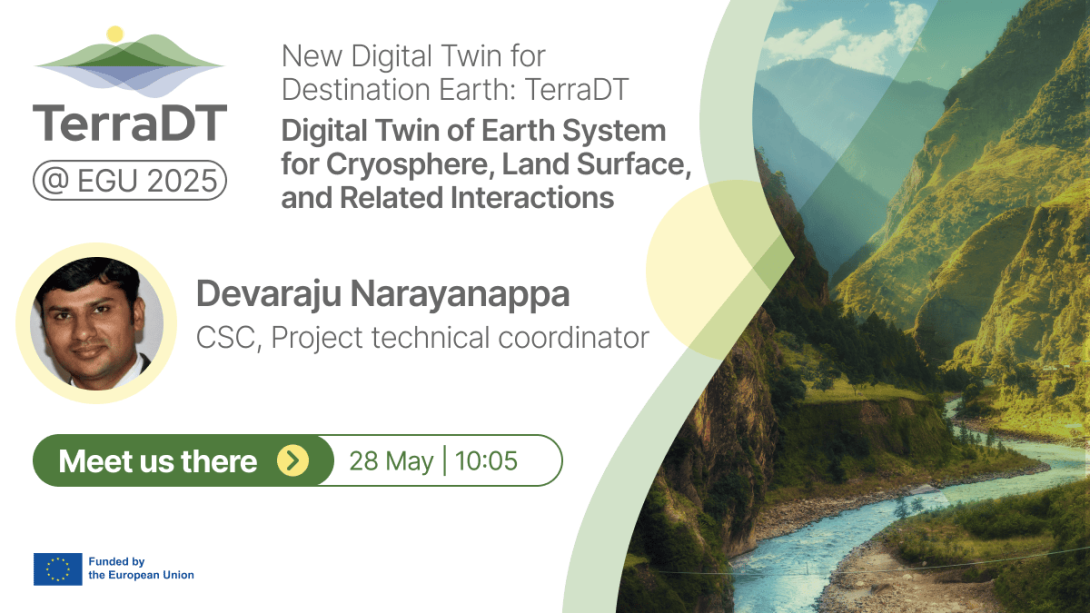
At EGU 2025, TerraDT was presented as a key initiative supporting the European Commission’s Destination Earth (DestinE) programme. This Horizon Europe-funded project is developing a next-generation Digital Twin of the Earth system, with a focus on the cryosphere, land surface, and their complex interactions. TerraDT addresses critical limitations in current climate modeling, aiming to deliver more accurate, actionable insights for climate adaptation and mitigation.
Key features of TerraDT include:
- High-resolution Earth system modeling at km-scale, improving representation of land ice, sea ice, aerosols, and land surface processes.
- A modular, scalable, and interoperable infrastructure, aligned with DestinE, enabling integration of novel components and models.
- Use of AI and machine learning emulators to accelerate simulations and enhance predictive capabilities.
- A user-oriented approach, engaging scientists, public institutions, and private stakeholders to ensure relevance and usability of outputs.
- Full integration into the DestinE ecosystem, contributing to a cohesive, science-based digital environment for informed decision-making.
Through these innovations, TerraDT strengthens the foundations of climate impact assessments and positions itself as a transformative element in Europe’s digital and green transitions.
Devaraju, N., Kontkanen, J., Poutanen, J., Tonttila, J., Bockelmann, H., Schmidt, H., Koldunov, N., Klocke, D., Tourigny, E., Giuffrida, M., Acosta, M., Kokkola, H., Zwinger, T., Laakso, A., and Garavelli, S.: New Digital Twin for Destination Earth: TerraDT – Digital Twin of Earth System for Cryosphere, Land Surface, and Related Interactions, EGU General Assembly 2025, Vienna, Austria, 27 Apr–2 May 2025, EGU25-17933, https://doi.org/10.5194/egusphere-egu25-17933, 2025.